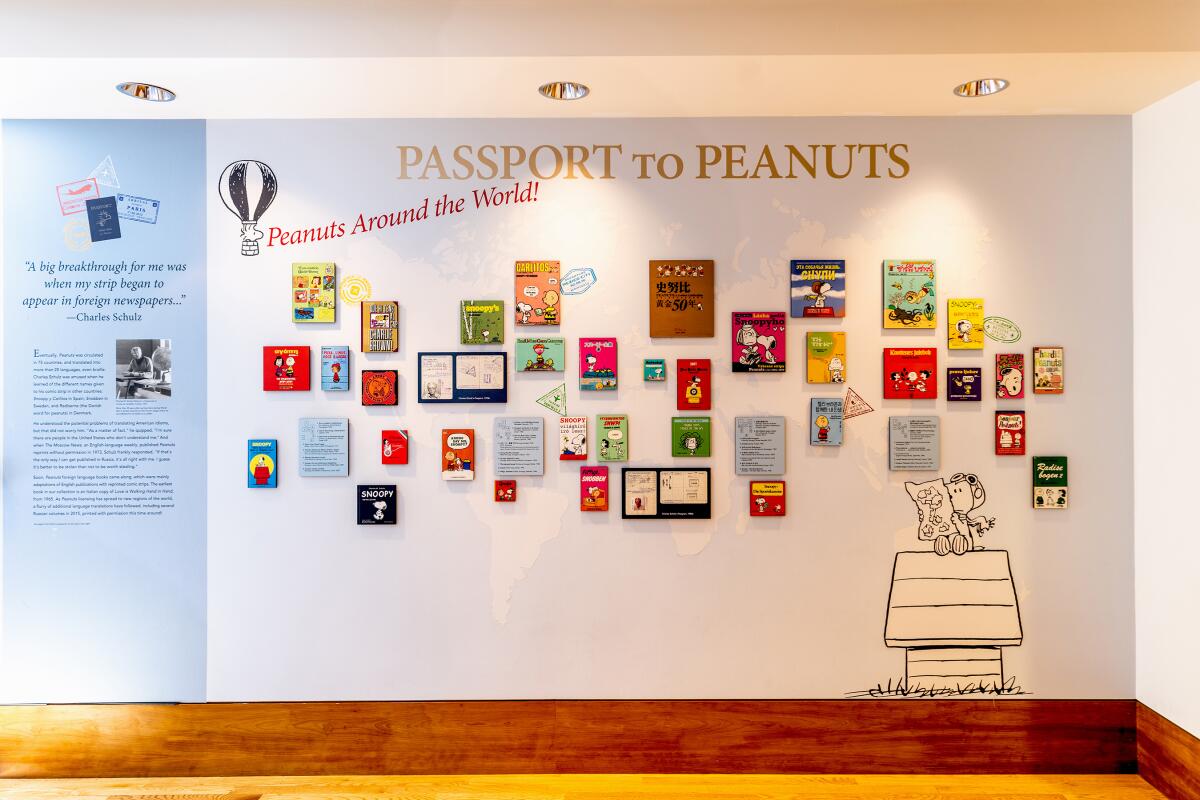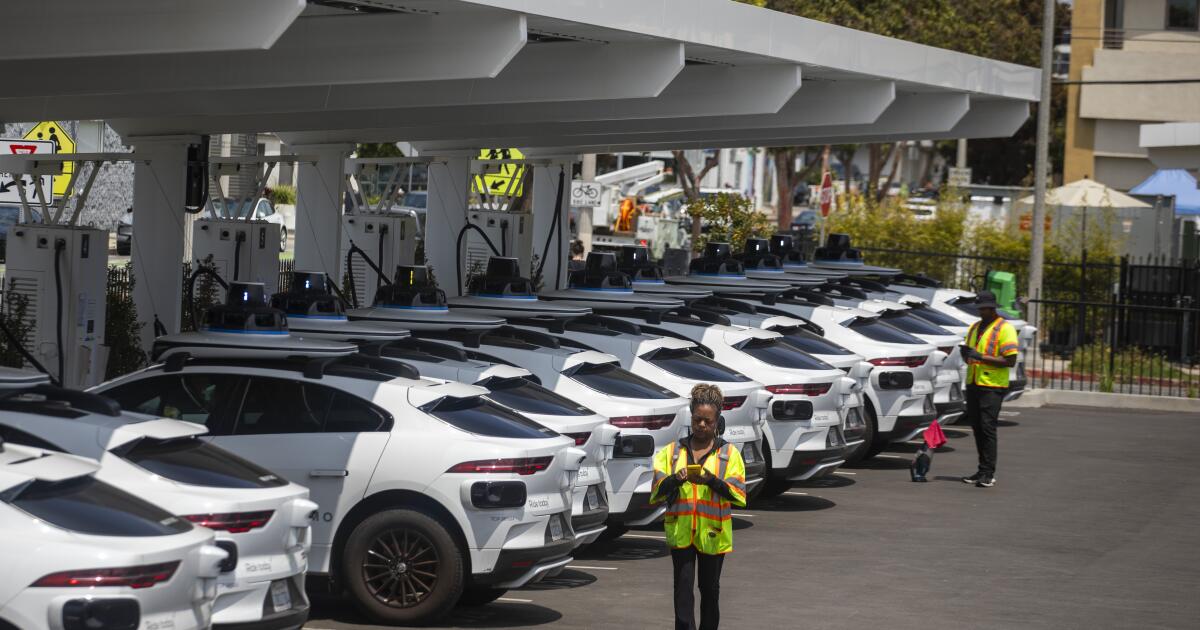Business
Rocket used to carry astronauts fails on uncrewed satellite mission

SpaceX’s workhorse Falcon 9 rocket, which carries astronauts to the International Space Station, experienced a rare failure Thursday night after blasting off from Vandenberg Space Force Base on an uncrewed mission.
The rocket, which had a payload of 20 satellites for SpaceX’s Starlink internet network, took off without incident about 7:30 p.m. Pacific time, but the second stage of the rocket that delivers the satellites into their final orbit failed.
SpaceX said the failure resulted in the satellites reaching a lower orbit than intended. SpaceX CEO Elon Musk tweeted Thursday evening that after engineers attempted to restart it, the second stage experienced an “RUD,” an acronym for “rapid unscheduled disassembly,” typically shorthand for an explosion.
On Friday, SpaceX said in an update said that a liquid oxygen leak had developed in the second stage of the rocket, but it survived the unsuccessful restart, though the satellites’ orbit is too low for them to remain in space.
The failure prompted the Federal Aviation Administration to ground the rocket pending the outcome of an investigation into the cause of the accident. SpaceX said it will conduct a full investigation in coordination with the agency.
Laura Forczyk, executive director of space industry consultancy Astralytical, noted that satellites were not destroyed when the rocket’s second stage failed.
If this had been a flight carrying SpaceX’s Crew Dragon capsule, she said, it would not necessarily have been catastrophic since the capsule could return to Earth using its parachute system.
The 20 satellites are expected to burn up in the atmosphere and not pose any threat, SpaceX said Friday.
The rocket has launched SpaceX’s Crew Dragon capsule with astronauts aboard to the space station more than a half dozen times since 2020. It was scheduled to launch another crew in August.
In all, the Falcon 9, which has a reusable first stage, has launched a total 352 missions, according to SpaceX. The company said the first stage used in Thursday’s night launch returned to Earth safely. Prior to Thursday’s launch, the Falcon 9 had not failed in more than 300 flights.
The rocket last failed in flight in June 2015 when it was carrying out an uncrewed cargo resupply mission to the space station. A Falcon 9 also exploded on the launchpad at Cape Canaveral Air Force Station in September 2016 during fueling while carrying a satellite payload.
A lengthy grounding of the rocket would deal a blow to the U.S. space and global satellite industries, which rely on the rocket to launch satellites not only for SpaceX but other customers.
SpaceX said Friday that “With a robust satellite and rocket production capability, and a high launch cadence, we’re positioned to rapidly recover and continue our pace as the world’s most active launch services provider.”
NASA has relied on the rocket and the Crew Dragon to ferry astronauts to the orbiting lab since awarding SpaceX a $2.6-billion contract in 2014 to develop the capsule.
The space agency awarded a larger $4.2-billion contract to Boeing to build its own capsule called the Starliner, but that program is years behind SpaceX and only launched its first human test flight last month.
That mission, repeatedly delayed on the launchpad, was supposed to last only eight days but now may be extended for months because of problems with the Starliner propulsion system.
There had been speculation that NASA might have to send a Crew Dragon to the station to bring the astronauts back down. The agency has denied that it has any such plans. But if the Starliner cannot be used, the Russians’ Soyuz craft could serve as an alternative.
The next human flight of the Falcon 9 rocket had been scheduled for July 31 at Cape Canaveral Space Force Station, when it was expected to launch billionaire Jared Isaacman to space in a private tourist flight.
That flight and the August mission to the space station are now in limbo.

Business
Snoopy is everywhere right now — from jewelry to pimple patches. Why?

As a child, Clara Spars, who grew up in Charles M. Schulz’s adoptive hometown of Santa Rosa, assumed that every city had life-size “Peanuts” statues dotting its streets.
After all, Spars saw the sculptures everywhere she went — in the Santa Rosa Plaza, at Montgomery Village, outside downtown’s Empire Cleaners. When she and her family inevitably left town and didn’t stumble upon Charlie Brown and his motley crew, she was perplexed.
Whatever void she felt then is long gone, since the beagle has become a pop culture darling, adorning all manner of merchandise — from pimple patches to luxury handbags. Spars herself is the proud owner of a Baggu x Peanuts earbuds case and is regularly gifted Snoopy apparel and accessories.
“It’s so funny to see him everywhere because I’m like, ‘Oh, finally!’” Spars said.
The spike in Snoopy products has been especially pronounced this year with the 75th anniversary of “Peanuts,” a.k.a. Snoopy’s 75th birthday. But the grip Snoopy currently has on pop culture and the retail industry runs deeper than anniversary buzz. According to Sony, which last week acquired majority ownership of the “Peanuts” franchise, the IP is worth half a billion dollars.
To be clear, Snoopy has always been popular. Despite his owner being the “Peanuts” strip’s main character and the namesake for most of the franchise’s adaptations, Snoopy was inarguably its breakout star. He was the winner of a 2001 New York Times poll about readers’ favorite “Peanuts” characters, with 35% of the vote.
This year, the Charles M. Schulz Museum celebrated the 75th anniversary of the “Peanuts” comic strip’s debut.
(Brennan Spark / Charles M. Schulz Museum)
But the veritable Snoopymania possessing today’s consumers really exploded with the social media boom of the early 2010s, said Melissa Menta, senior vice president of global brand and communications for Peanuts Worldwide.
That’s also when the company saw the first signs of uncharacteristically high brand engagement, Menta said. She largely attributed the success of “Peanuts” on social media to the comic strip’s suitability to visual platforms like Instagram.
“No one reads the comic strips in newspapers anymore,” Menta said, “but if you think about it, a four-panel comic strip, it’s actually an Instagram carousel.”
Then, in 2023, Peanuts Worldwide launched the campaign that made Snoopy truly viral.
That year, the brand partnered with the American Red Cross to create a graphic tee as a gift for blood donors. The shirt, which featured Snoopy’s alter ego Joe Cool and the message “Be Cool. Give Blood,” unexpectedly became internet-famous. In the first week of the collaboration, the Red Cross saw a 40% increase in donation appointments, with 75% of donors under the age of 34.
“People went crazy over it,” Menta said, and journalists started asking her, “Why?”
Her answer? “Snoopy is cute and cool. He’s everything you want to be.”

“Charles Schulz said the only goal he had in all that he created was to make people laugh, and I think he’s still doing that 75 years later,” Schulz Museum director Gina Huntsinger said.
(Brennan Spark / Charles M. Schulz Museum)
The Red Cross collaboration was so popular that Peanuts Worldwide brought it back this year, releasing four new shirt designs. Again, the Snoopy fandom — plus some Woodstock enthusiasts — responded, with 250,000 blood donation appointments made nationwide in the month after the collection’s launch.
In addition to the Red Cross partnership, Peanuts Worldwide this year has rolled out collaborations with all kinds of retailers, from luxury brands like Coach and Kith to mass-market powerhouses like Krispy Kreme and Starbucks. Menta said licensed product volume is greater than ever, estimating that the brand currently has more than 1,200 licensees in “almost every territory around the world,” which is approximately four times the number it had 40 years ago.
Then again, at that time, Schulz enjoyed and regularly executed veto power when it came to product proposals, and licensing rules were laid out in what former Times staff writer Carla Lazzareschi called the “Bible.”
“The five-pound, 12-inch-by-18-inch binder given every new licensee establishes accepted poses for each character and painstakingly details their personalities,” Lazzareschi wrote in a 1987 Times story. “Snoopy, for example, is said to be an ‘extrovert beagle with a Walter Mitty complex.’ The guidelines cover even such matters as Snoopy’s grip on a tennis racquet.”
Although licensing has expanded greatly since then, Menta said she and her retail development associates “try hard not to just slap a character onto a T-shirt.” Their goal is to honor Schulz’s storytelling, she added, and with 18,000 “Peanuts” strips in the archive, licensees have plenty of material to pull from.
Rick Vargas, the senior vice president of merchandising and marketing at specialty retailer BoxLunch, said his team regularly returns to the Schulz archives to mine material that could resonate with customers.
“As long as you have a fresh look at what that IP has to offer, there’s always something to find. There’s always a new product to build,” Vargas said.
Indeed, this has been one of BoxLunch’s strongest years in terms of sales of “Peanuts” products, and Snoopy merchandise specifically, the executive said.

BaubleBar co-founder Daniella Yacobovsky said the brand’s “Peanuts” collaboration was one of its most beloved yet.
(BaubleBar)
Daniella Yacobovsky, co-founder of the celebrity-favorite accessory retailer BaubleBar, reported similar high sales for the brand’s recent “Peanuts” collection.
“Especially for people who are consistent BaubleBar fans, every time we introduce new character IP, there is this huge excitement from that fandom that we are bringing their favorite characters to life,” Yacobovsky said.
The bestselling item in the collection, the Peanuts Friends Forever Charm Bracelet, sold out in one day. Plus, customers have reached out with new ideas for products linked to specific “Peanuts” storylines.
More recently, Peanuts Worldwide has focused on marketing to younger costumers in response to unprecedented brand engagement from Gen Z. In November, it launched a collaboration with Starface, whose cult-favorite pimple patches are a staple for teens and young adults. The Snoopy stickers have already sold out on Ulta.com, Starface founder Julie Schott said in an emailed statement, adding that the brand is fielding requests for restocks.
“We know it’s a certified hit when resale on Depop and EBay starts to spike,” Schott said.
The same thing happened in 2023, when a CVS plush of Snoopy in a puffer jacket (possibly the dog’s most internet-famous iteration to date) sold out in-store and started cropping up on EBay — for more than triple the original price.
The culprits were Gen-Zers fawning over how cute cozy Snoopy was, often on social media.

“People who love Snoopy adore Snoopy, whether you grew up with ‘Peanuts’ or connect with Snoopy as a meme and cultural icon today,” said Starface founder Julie Schott.
(Starface World Inc.)
Hannah Guy Casey, senior director of brand and marketing at Peanuts Worldwide, said in 2024, the official Snoopy TikTok account gained 1.1 million followers, and attracted 85.4 million video views and 17.6 million engagements. This year, the account has gained another 1.2 million followers, and racked up 106.5 million video views and 23.2 million engagements.
Guy Casey noted that TikTok is where the brand experiences much of its engagement among Gen Z fans.
Indeed, the platform is a hot spot for fan-created Snoopy content, from memes featuring the puffer jacket to compilations of his most relatable moments. Several Snoopy fan accounts, including one dedicated to a music-loving Snoopy plushie, boast well over half a million followers.
Caryn Iwakiri, a speech and language pathologist at Sunnyvale’s Lakewood Tech EQ Elementary School whose classroom is Snoopy-themed, recently took an impromptu trip to the Charles M. Schulz Museum in Santa Rosa after seeing its welcome center decked out with Snoopy decor on TikTok. Once she arrived, she realized the museum was celebrating the “Peanuts” 75th anniversary.

Last year, the Schulz Museum saw its highest-ever attendance, driven in large part by its increased visibility on social media.
(Brennan Spark / Charles M. Schulz Museum)
It’s a familiar story for Schulz Museum director Gina Huntsinger.
“Last December, we were packed, and I was at the front talking to people, and I just randomly asked this group, ‘Why are you here?’”
It turned out that the friends had traveled from Washington, D.C., and Las Vegas to meet in Santa Rosa and visit the museum after seeing it on TikTok.
According to Stephanie King, marketing director at the Schulz Museum, the establishment is experiencing its highest-ever admissions since opening in 2002. In the 2024–2025 season, the museum increased its attendance by nearly 45% from the previous year.
Huntsinger said she’s enjoyed watching young visitors experience the museum in new ways.
In the museum’s education room, where visitors typically trace characters from the original Schulz comics or fill out “Peanuts” coloring pages, Gen Z museumgoers are sketching pop culture renditions of Snoopy — Snoopy as rock band Pierce the Veil, Snoopy as pop star Charli XCX.
“When our social media team puts them up [online], there’s these comments among this generation that gets this, and they’re having conversations about it,” Huntsinger said. “It’s dynamic, it’s fun, it’s creative. It makes me feel like there’s hope in the world.”

The Schulz Museum’s “Passport to Peanuts” exhibition emphasizes the comic’s global reach.
(Brennan Spark / Charles M. Schulz Museum)
Laurel Roxas felt similarly when they first discovered “Peanuts” as a kid while playing the “Snoopy vs. the Red Baron” video game on their PlayStation Portable. For Roxas, who is Filipino, it was Snoopy and not the “Peanuts” children who resonated most.
“Nobody was Asian. I was like, ‘Oh, I’m not even in the story,’” they said.
Because Snoopy was so simply drawn, Roxas added, he was easy to project onto. They felt similarly about Hello Kitty; with little identifying features or dialogue of their own, the characters were blank canvases for their own personification.
Roxas visited Snoopy Museum Tokyo with their brother last year. They purchased so much Snoopy merchandise — “everything I could get my hands on” — that they had to buy additional luggage to bring it home.
For some Snoopy enthusiasts, the high volume of Snoopy products borders on oversaturation, threatening to cheapen the spirit of the character.
Growing up, Bella Shingledecker loved the holiday season because it meant that the “Peanuts” animated specials would be back on the air. It was that sense of impermanence, she believes, that made the films special.
Now, when she sees stacks of Snoopy cookie jars or other trend-driven products at big-box stores like T.J. Maxx, it strikes her as a bit sad.
“It just feels very unwanted,” she said. For those who buy such objects, she said she can’t help but wonder, “Will this pass your aesthetic test next year?”
Lina Jeong, for one, isn’t worried that Snoopy’s star will fade.

“[Snoopy is] always able to show what he feels, but it’s never through words, and I think there’s something really poetic in that,” said Lina Jeong.
(Brennan Spark / Charles M. Schulz Museum)
Jeong’s affinity for the whimsical beagle was passed down to her from her parents, who furnished their home with commemorative “Peanuts” coffee table books. But she fell in love with Snoopy the first time she saw “Be My Valentine, Charlie Brown,” which she rewatches every Valentine’s Day.
This past year, she was fresh out of a relationship when the holiday rolled around and she found herself tearing up during scenes of Snoopy making Valentine’s crafts for his friends.
“Maybe I was hyper-emotional from everything that had happened, but I remember being so struck,” that the special celebrated platonic love over romantic love, Jeong said.
It was a great comfort to her at the time, she said, and she knows many others have felt that same solace from “Peanuts” media — especially from its dear dog.
“Snoopy is such a cultural pillar that I feel like fads can’t just wash it off,” she said.
Soon, she added, she plans to move those “Peanuts” coffee table books into her own apartment in L.A.
Business
Fight between Waymo and Santa Monica goes to court

Waymo is taking the city of Santa Monica to court after the city ordered the company to cease charging its autonomous vehicles at two facilities overnight, claiming the lights and beeping at the lots were a nuisance to residents.
The two charging stations at the intersection of Euclid Street and Broadway have been a sour point for neighbors since they began operating roughly a year ago. Some residents have told The Times they’ve been unable to sleep because of the incessant beeping from Waymos maneuvering in and out of charging spots on the lot 24 hours a day.
Last month, the city ordered Waymo and the company that operates the charging stations, Voltera, to stop overnight operations at the sites, arguing that the light, noise and activity there constitute a public nuisance. Instead of complying, Waymo has turned around and filed a suit against the city, asking the court to intervene.
“Waymo’s activities at the Broadway Facilities do not constitute a public nuisance,” the company argued in its complaint, filed Wednesday in Los Angeles County Superior Court. “Waymo faces imminent and irreparable harm to its operations, employees, and customers.”
A spokesperson for the city did not immediately respond to a request for comment.
According to the suit, the city was aware that the Voltera charging facilities were to operate and maintain a commercial electric vehicle fleet 24 hours a day, and the city approved its use when it approved the permits for the stations.
The rift between the company and some Santa Monica residents began as soon as the vehicles began utilizing the 24-hour charging stations, which have overnight staffing, lights and cars beeping as they reverse in and out of parking spots. Tensions got so bad that some residents took to blocking the path of the driverless vehicles, blocking the driveways into the charging stations, and placing orange cones in the area to hinder their routes and create backups, a practice several have called “stacking the Waymos.”
Meanwhile, employees at the charging stations have called police several times as a result, although no arrests have been made. Waymo also unsuccessfully attempted to obtain a temporary restraining order against one resident who had allegedly repeatedly blocked the vehicles.
On Nov. 19, the city ordered Waymo to stop charging its autonomous cars at the two lots overnight or face the possibility of legal action. Waymo declined and instead sued the city last week after negotiations with the city on mitigation measures to the lots fell apart.
According to the lawsuit, Waymo and Voltera representatives reached out to the city after the Nov. 19 order, looking for ways to mitigate the noise and lights from the lots, including initiating a software update that would change the vehicles’ path to the charging stations. But after a meeting on Dec. 15 with the city, no agreement was reached, the company said in its complaint.
“We are disappointed that the City has chosen an adversarial path over a collaborative one,” a spokesperson for Waymo said in a statement.
“The City’s position has been to insist that no actions taken or proposed by Waymo would satisfy the complaining neighbors and therefore must be deemed insufficient.”
The company also blasted the city’s handling of the dispute, arguing that despite facing a budget crisis, city officials have adopted a contentious strategy against business.
“The City of Santa Monica’s recent actions are inconsistent with its stated goal of attracting investment,” the company said in a statement. “At a time when the City faces a serious fiscal crisis, officials are choosing to obstruct properly permitted investment rather than fostering a ‘ready for business’ environment.”
The lawsuit is just the latest legal battle for the Alphabet-owned company, which has been rapidly expanding across California, making the white, driverless vehicles more commonplace.
Two years ago, the company was sued by the city of San Francisco, which argued that the California Public Utilities Commission shouldn’t have handed Waymo permits to expand and operate in the city, and that the regulatory agency had abdicated its responsibilities.
The California 1st District Court of Appeal disagreed, and ruled against the city.
This past June, Waymo announced it would expand its service area to 120 square miles in Los Angeles County, with Waymos operating in Playa del Rey, Ladera Heights, Echo Park, Silver Lake and Hollywood.
In November the company launched its ride-hailing service to now operate across Los Angeles County freeways, as well as in the San Francisco Bay and Phoenix.
Since it launched in Santa Monica, the company argues it has done more than a million trips in the city and in November alone, recorded more than 50,000 rides starting or ending there.
“The [charging] site has enabled Waymo to provide a safe, sustainable and accessible transportation option to city residents,” Waymo said in the statement.
Business
Video: Uber Clears Violent Felons to Drive

new video loaded: Uber Clears Violent Felons to Drive
By Emily Steel, Christina Shaman, Zach Caldwell, David Jouppi and Thomas Trudeau
December 22, 2025
-

 Iowa1 week ago
Iowa1 week agoAddy Brown motivated to step up in Audi Crooks’ absence vs. UNI
-

 Maine1 week ago
Maine1 week agoElementary-aged student killed in school bus crash in southern Maine
-

 Maryland1 week ago
Maryland1 week agoFrigid temperatures to start the week in Maryland
-

 New Mexico7 days ago
New Mexico7 days agoFamily clarifies why they believe missing New Mexico man is dead
-

 South Dakota1 week ago
South Dakota1 week agoNature: Snow in South Dakota
-

 Detroit, MI1 week ago
Detroit, MI1 week ago‘Love being a pedo’: Metro Detroit doctor, attorney, therapist accused in web of child porn chats
-

 Health1 week ago
Health1 week ago‘Aggressive’ new flu variant sweeps globe as doctors warn of severe symptoms
-

 Maine7 days ago
Maine7 days agoFamily in Maine host food pantry for deer | Hand Off



















